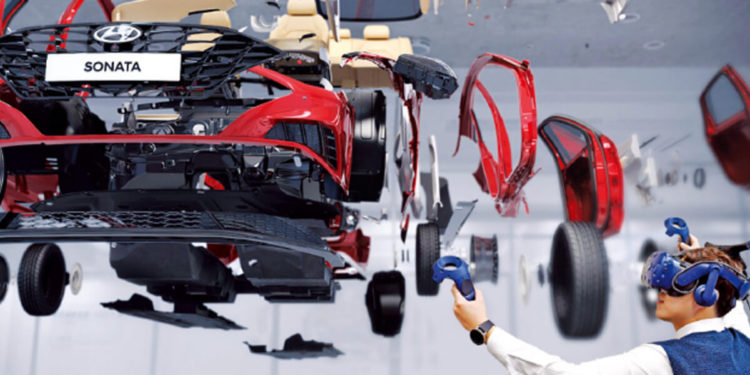Hyundai Motor Co. announced that it plans to introduce digital twin, a technology enabling automobile manufacturers to generate real car digital replicas. The digital twin technology also supports virtual and physical space car simulation using cutting-edge equipment.
According to information technology industry sources, the South Korean automaker would apply digital twin to the Hyundai Mobility Global Innovation Center in Singapore’s (HMGICS) design unit.
Moreover, HMGICS is a Hyundai-built mobility innovation hub incorporating state-of-the-art technologies, including artificial intelligence (AI), Internet-of-Things (IoT), and robotics. Besides being a comprehensive testing platform for automobile value chains, HMGICS functions as Hyundai’s initial electric vehicle (EV) production system.
Improving Production Processes
Hyundai currently employs digital twin technologies in designing a handful of car models. The automaker also aims to expand the technology’s usage in developing all future releases.
“Digital twin allows us to quickly reflect the power flow, resistance, and inter-part linkage without actual automotive prototypes,” said Park Dong-Il, Hyundai Motor’s Vice President.
Park also noted that in addition to being time-consuming, building a system requires massive data. However, the digital twin technology could dramatically develop and improve production processes.
Furthermore, the low-cost digital twin technology significantly increases productivity by connecting reality and virtual spaces. As a result, many sectors apart from the automotive industry plan to adopt digital twin to their businesses. Some of the industries include energy, logistics, and manufacturing.
Various Industries Applying Digital Twin
For instance, the Seoul-based CJ Logistics seeks to adopt digital twin technologies to streamline cargo and freight handling.
Previously, LG Electronics launched an automated, digital twin-equipped production system while LG Display applied the technology to an OLED display module production center.
Hyundai Heavy Industries also plans to introduce a new digital twin technology optimized for ship operations. The solution would create virtual replicas of physical environments and enable ship operators to monitor carrier and facility performance closely.
The Korea Aerospace Industries (KAI) also utilized digital twin for the next-gen KF-21 fighter jet’s development. In particular, KAI used digital twin to combine designing, engineering, and manufacturing processes into a single platform.
Coordinating with ESG Management
Additionally, the digital twin technology minimizes carbon wastes and emissions, allowing companies to reinforce environmental, social, and governance (ESG) management.
For instance, Hyundai could significantly reduce energy consumption and prototype vehicle amounts in developing new models by employing digital twin.







